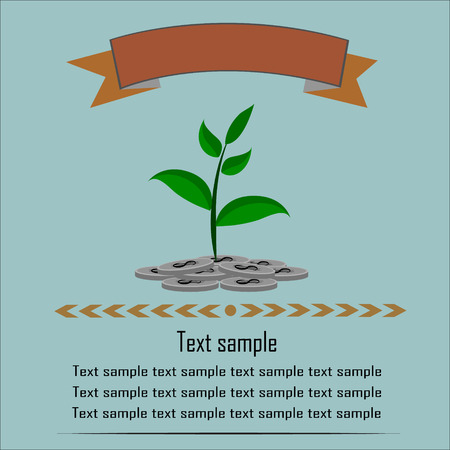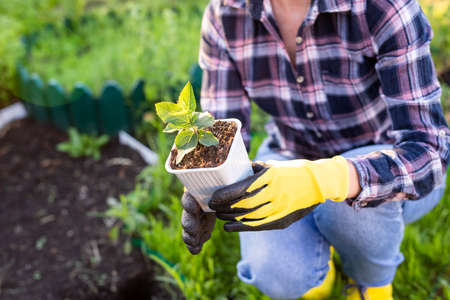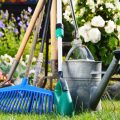1. Understanding the Basics of Composting
Composting is a natural process that turns organic waste—like kitchen scraps and yard clippings—into nutrient-rich soil called compost. It’s like recycling for your garden, helping reduce household waste while boosting soil health. In American homes, composting is becoming more popular as families look for eco-friendly ways to live sustainably and grow healthier plants right in their backyard.
What Is Composting?
Composting is the breakdown of organic materials by microorganisms such as bacteria and fungi. These tiny helpers feed on your food scraps, leaves, and lawn trimmings, turning them into dark, crumbly compost that smells earthy and fresh. This natural fertilizer enriches your garden soil, helping plants grow stronger without synthetic chemicals.
The Science Behind Decomposition
When you create a compost pile or bin, youre building a mini-ecosystem. Microorganisms need the right balance of four main components to do their job efficiently:
| Component | Purpose | Examples |
|---|---|---|
| Greens (Nitrogen) | Feed microbes and speed up decomposition | Fruit peels, vegetable scraps, coffee grounds |
| Browns (Carbon) | Add structure and absorb moisture | Dried leaves, cardboard, newspaper |
| Water | Keeps the pile moist for microbial activity | Rainwater or occasional watering |
| Air (Oxygen) | Aerates the pile to prevent odor and promote breakdown | Turning the pile regularly |
When these elements are balanced just right—usually a mix of about 2 parts browns to 1 part greens—youll have healthy compost in as little as a few weeks to a few months.
Why Composting Matters for Sustainable Gardening
In the United States, food waste makes up nearly 30% of what we throw away. By composting at home, youre not only reducing landfill waste but also creating free fertilizer for your garden. Compost improves soil structure, helps retain moisture, reduces the need for chemical fertilizers, and supports beneficial organisms like earthworms.
Benefits of Composting for American Home Gardens:
- Saves money on store-bought soil amendments
- Nurtures healthier vegetables, herbs, flowers, and lawns
No matter if you live in a small suburban lot or have acres of rural land, composting is an easy step toward making your garden greener—and more productive—all year round.
2. Choosing the Right Composting Method for Your Space
When it comes to composting at home, one size definitely doesn’t fit all. The best composting method for you depends on how much space you have, how much organic waste you produce, and how involved you want to be in the process. Lets explore some common composting systems that work well for American homes and gardens.
Backyard Compost Bins
If you have a decent-sized yard, a backyard compost bin is a great option. These bins are stationary containers that hold your kitchen scraps, yard waste, and other compostable materials. They’re easy to use and ideal if you generate a moderate amount of organic waste.
Best For:
- Homes with medium to large backyards
- Families who cook often and have lots of food scraps
- People who don’t mind turning the pile occasionally
Tumbling Composters
Tumblers are enclosed bins mounted on a frame that allows them to spin or rotate. This motion helps mix the materials inside, speeding up decomposition. They’re cleaner and more pest-resistant than open bins and perfect for smaller yards or patios.
Best For:
- Small yards or urban settings
- People who want faster results with less manual labor
- Those concerned about pests or odor
Vermicomposting (Worm Bins)
Don’t have outdoor space? Vermicomposting uses red worms to break down food scraps indoors. Worm bins can fit under your sink or in a closet, making them ideal for apartment dwellers or anyone with limited outdoor access.
Best For:
- Apartments and small indoor spaces
- Eco-conscious individuals looking for a fun project
- Households with minimal yard waste but plenty of food scraps
Composting Methods at a Glance
| Method | Space Needed | Ideal For | Maintenance Level |
|---|---|---|---|
| Backyard Bin | Medium to Large Outdoor Area | Families with gardens and yard waste | Moderate (turn pile regularly) |
| Tumbler | Small Yard/Patio | Pest-sensitive users; quick composters | Low to Moderate (rotate bin) |
| Worm Bin (Vermicomposting) | Indoor/Compact Space | Apartments; indoor gardeners | Low (keep worms fed and moist) |
No matter your living situation, there’s a composting solution that can work for you. With the right system in place, turning kitchen and garden waste into nutrient-rich soil becomes simple, sustainable—and even fun!

3. What to Compost and What to Avoid
Creating a successful compost pile starts with knowing what materials belong in it—and what should stay out. The right balance of organic waste keeps your compost healthy, odor-free, and ready to enrich your garden soil. Let’s break down which common household and yard items are compost-friendly and which ones can cause problems.
Compost-Friendly Materials
These items are rich in nutrients or carbon and break down well in a home compost system. They’re typically categorized as “greens” (nitrogen-rich) and “browns” (carbon-rich), both essential for a balanced compost pile.
| Greens (Nitrogen-Rich) | Browns (Carbon-Rich) |
|---|---|
| Fruit and vegetable scraps | Dried leaves |
| Coffee grounds and filters | Shredded newspaper (non-glossy) |
| Tea bags (without plastic) | Cardboard (uncoated) |
| Grass clippings | Sawdust from untreated wood |
| Plant trimmings | Paper towels (unbleached, no chemicals) |
What to Avoid Putting in Your Compost Pile
Some materials may attract pests, introduce harmful bacteria, or take too long to decompose. Keeping these out helps maintain a safe and efficient composting process.
- Meat, dairy, and oily foods: These can smell bad and attract rodents or raccoons.
- Pet waste: May contain parasites or harmful pathogens unsafe for home compost.
- Treated wood or glossy paper: Can release toxic chemicals into the soil.
- Synthetic materials: Plastics, foil, rubber bands, and similar items won’t break down.
- Diseased plants: Could spread disease when you use the finished compost in your garden.
- Weeds with seeds: Seeds might survive the composting process and sprout later in your garden beds.
Quick Tips for Compost Success
Balance Greens and Browns
A good rule of thumb is to aim for about 2 parts browns for every 1 part greens. This helps manage moisture levels and avoids unpleasant odors.
Chop Before You Drop
Larger pieces of food or yard waste take longer to break down. Chopping them into smaller bits speeds up the decomposition process.
Avoid Overloading on One Material
A variety of materials promotes diverse microbial activity. Too much of one type—like all grass clippings—can lead to a slimy, smelly pile.
Your Garden Will Thank You!
By choosing the right ingredients for your compost pile, youre not just reducing waste—youre creating nutrient-rich soil that helps your garden thrive naturally.
4. Maintaining a Healthy Compost Pile
Keeping your compost pile in top shape is key to turning everyday kitchen scraps and yard waste into rich, garden-boosting soil. A healthy compost pile breaks down faster, smells fresh like earth, and is full of nutrients your plants will love. Let’s look at the three main things you need to manage: aeration, moisture levels, and the green-to-brown ratio.
Aeration: Let It Breathe
Your compost pile needs oxygen to support the microbes that break everything down. Without enough air, your pile can become smelly and slow to decompose. To keep it breathing:
- Turn your pile once a week with a garden fork or compost aerator.
- Add bulky brown materials like small twigs or shredded cardboard to create air pockets.
- Avoid compacting the pile—don’t squash it down.
Moisture Levels: Not Too Wet, Not Too Dry
The right moisture level feels like a wrung-out sponge—not dripping wet, but definitely damp. Here’s how to check and adjust it:
- If too dry: Add water while turning the pile, or mix in moist greens like fruit scraps or coffee grounds.
- If too wet: Mix in more browns such as dry leaves, paper, or sawdust to soak up excess moisture.
The Green-to-Brown Ratio: Balance Is Everything
A well-balanced compost pile needs both nitrogen-rich “greens” and carbon-rich “browns.” Greens provide protein for microbes, while browns supply energy and help with structure. Aim for about 1 part green to 2-3 parts brown by volume. Use this table as a quick guide:
| Greens (Nitrogen) | Browns (Carbon) |
|---|---|
| Fruit & veggie scraps | Dried leaves |
| Coffee grounds | Shredded newspaper |
| Grass clippings | Sawdust (untreated wood) |
| Tee bags (non-plastic) | Cereal boxes (shredded) |
Troubleshooting Common Issues
If your compost smells bad, its likely too wet or has too many greens. If its not breaking down fast enough, it might be too dry or lacking in greens. Adjusting one of the three key factors—air, moisture, or ratio—usually gets things back on track quickly.
Your Compost Checklist
- [ ] Turn the pile weekly for airflow
- [ ] Check moisture regularly — aim for “wrung-out sponge” feel
- [ ] Add browns and greens in proper balance
- [ ] Watch for odor and adjust as needed
A little attention goes a long way when it comes to composting. Keep these simple practices in mind, and your compost will stay active, healthy, and ready to feed your sustainable home garden.
5. Using Finished Compost to Enhance Your Garden
Once your compost has fully broken down into a rich, dark, earthy-smelling material, its ready to be used in your garden. This finished compost is packed with nutrients and beneficial microbes that can do wonders for your soil and plants. Heres how to harvest and apply it effectively.
How to Know When Compost is Ready
Finished compost should look like dark, crumbly soil and have an earthy smell. It shouldnt have any recognizable food scraps or yard waste left. If youre using a compost bin or pile, this process typically takes 2–6 months depending on the materials used and how often its turned.
Signs of Finished Compost:
| Sign | Description |
|---|---|
| Color | Dark brown to black |
| Texture | Crumbly and soil-like |
| Smell | Earthy, like fresh soil |
| Contents | No visible food or garden scraps |
How to Harvest Compost
If you’re using a compost tumbler or closed bin, open the bottom or side hatch and scoop out the finished compost. For open piles, use a shovel or pitchfork to collect the mature compost from the bottom layer. You can sift it through a screen to remove larger pieces that need more time to break down.
Ways to Use Compost in Your Garden
1. Soil Amendment
Mix 1–2 inches of compost into the top few inches of garden soil before planting. This boosts nutrient content and improves soil texture and moisture retention.
2. Mulch
Spread a 2-inch layer of compost around established plants as mulch. This helps retain moisture, suppress weeds, and slowly feeds the soil as it breaks down further.
3. Lawn Top Dressing
Sifted compost can be spread thinly over your lawn (about ¼ inch) to add nutrients and improve soil structure beneath the grass.
4. Potting Mix Booster
Add finished compost to store-bought potting soil (about 1 part compost to 3 parts potting mix) for container gardening. This gives your potted plants a natural nutrient boost.
The Benefits: Why Use Finished Compost?
| Benefit | Description |
|---|---|
| Nutrient-Rich Soil | Adds essential nutrients like nitrogen, phosphorus, and potassium without synthetic fertilizers. |
| Improved Soil Structure | Makes heavy clay soils looser and sandy soils better at holding water. |
| Disease Resistance | Supports healthy microbial life that protects plants from disease. |
| Saves Money | Cuts down on the need for chemical fertilizers and soil conditioners. |
Tip:
You don’t need a huge yard to use compost—raised beds, containers, even houseplants can all benefit from small amounts of this “black gold.”
By using your own homemade compost, youre closing the loop in your sustainable gardening efforts—turning kitchen scraps and yard waste into something truly valuable for your home garden.
6. Troubleshooting Common Composting Problems
Even the most well-intentioned compost piles can sometimes hit a snag. Whether it’s a funky smell, unwanted critters, or a pile that just won’t break down, these issues are common and fixable. Let’s walk through some of the usual suspects and how to handle them in eco-friendly, practical ways.
Foul Smells
If your compost smells more like rotten eggs than rich earth, it’s usually due to too much moisture or not enough air. Compost should have a balanced mix of green (wet) and brown (dry) materials to decompose properly.
Quick Fixes:
| Cause | Solution |
|---|---|
| Too wet or compacted | Add dry browns like shredded newspaper, straw, or dry leaves. Turn the pile to increase airflow. |
| Lack of airflow | Use a pitchfork or compost aerator weekly to mix the pile and introduce oxygen. |
| Too many food scraps at once | Bury food waste deep into the pile and balance with more browns. |
Pests and Critters
Rats, raccoons, and insects are attracted to exposed food scraps. While bugs like worms and pill bugs help break things down, larger pests can be a problem.
How to Keep Pests Away:
- Avoid adding: Meat, dairy, oily foods, and bones.
- Cover food scraps: Always bury them under at least 8 inches of browns.
- Use a closed bin: Consider switching to a sealed compost tumbler or a critter-proof bin if youre in an urban area.
- Keep the area clean: Don’t leave food waste lying around near the pile.
Slow Decomposition
If your compost pile is taking months without much visible progress, it might need better balance or more attention.
Troubleshooting Slow Compost:
| Issue | What You Can Do |
|---|---|
| Not enough nitrogen (greens) | Add grass clippings, coffee grounds, or vegetable scraps. |
| Lack of moisture | The pile should feel like a wrung-out sponge. Add water if its too dry. |
| No turning or mixing | Aerate the pile every week to speed up microbial activity. |
| Pieces too large | Chop materials before adding them for faster breakdown. |
A Healthy Pile is an Active Pile
The key to successful composting is observation and small adjustments. If something seems off—whether its smell, appearance, or timing—check your balance of greens and browns, moisture level, and airflow. With these simple fixes, your backyard compost can stay on track to becoming nutrient-rich black gold for your garden!


